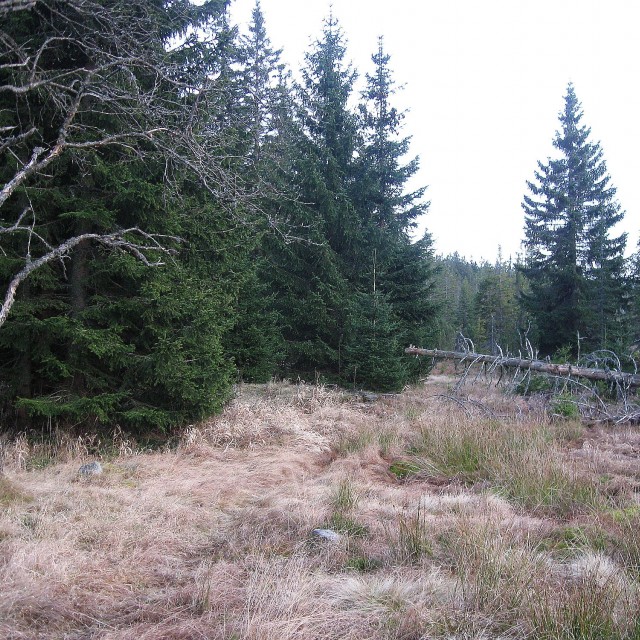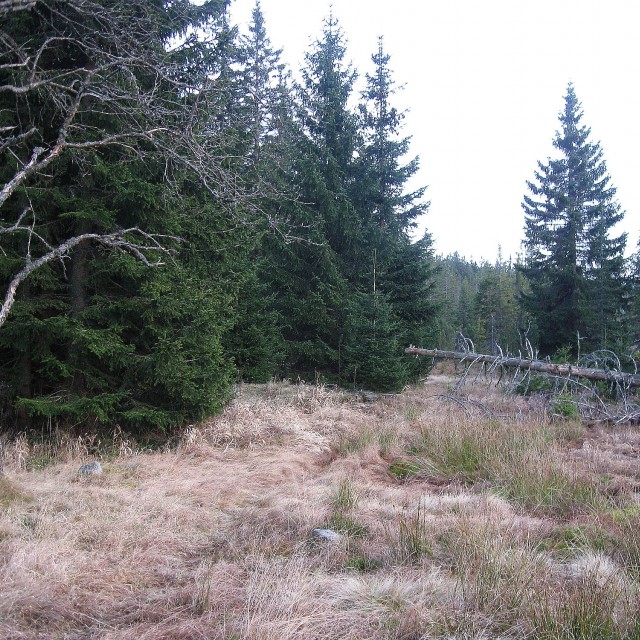The end of the secluded place Torfstich
In the 1950s, Eduard Steun was a boy living in a gamekeeper’s lodge in Zlatá Studna, near Horská Kvilda in Šumava. Among other things, he witnessed the events associated with the last “hunt” for the so-called “King of Šumava,” Kilian Nowotný. After he had been attacked by the police at the bridge over the Teplá Vltava River near Kvilda, the wounded Kilian managed to flee to Germany. His accomplices, however, were captured and arrested. On the run, they sought help from the family of Franz Pösl that lived in a remote and secluded area called Torfstich on the outskirts of the Mezilesní slať. Although their visit in Torfstich ended with a short conversation in the window and maybe the passing of a little food, the whole family was arrested and their home plundered and burned during one night. Eduard Steun, who at that time lived in nearby Zlatá Studna, recalls: “The next day, my brother as usual went there to get some milk. When he arrived there he was shocked. The house had been devastated, the residents and the cattle gone, and drunk police men and soldiers were lolling around in the beds. However, one of them even brought him some milk at the order of his commander. He then sent him away saying 'and don’t ever come back here again, nothing’s ever going to grow here anymore.'" The soldiers and the police soon appeared at the Steun family as well: “I and my sister had to sit in the kitchen on the couch and the police agents were searching the house. They went to see around the house with my mother, my father was not at home at the time. We were guarded by a soldier with a machine gun. Not that he would directly point the gun at us, but he just had to watch us. The court yard was full of soldiers and police men and these secret agents. Even they were dressed as if wearing a uniform. They wore a leather coat, a hat - both were dressed the same way. They came to our place a couple of times. They always wanted to know something. They asked if anyone had been to our place, asked for direction to the border, etc. They also wanted to know if anyone had slept at our place. We had a barn next to the lodge. It was permanently open because we had a couple of tamed deer who would come for hay there. So my parents were afraid that the police might find a trace of somebody sleeping in the hay in the barn. Luckily, they didn't find anything of the sort.”
Hodnocení
Hodnotilo 0 lidí
Routes
Not a part of any route.
Comments
No comments yet.




